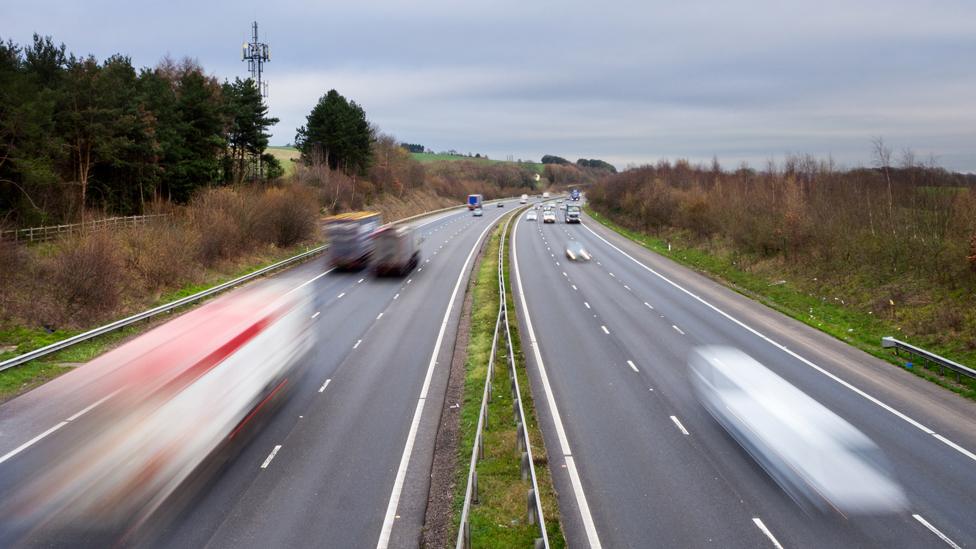Driving: More 50mph zones on the way for Welsh roads?
- Published
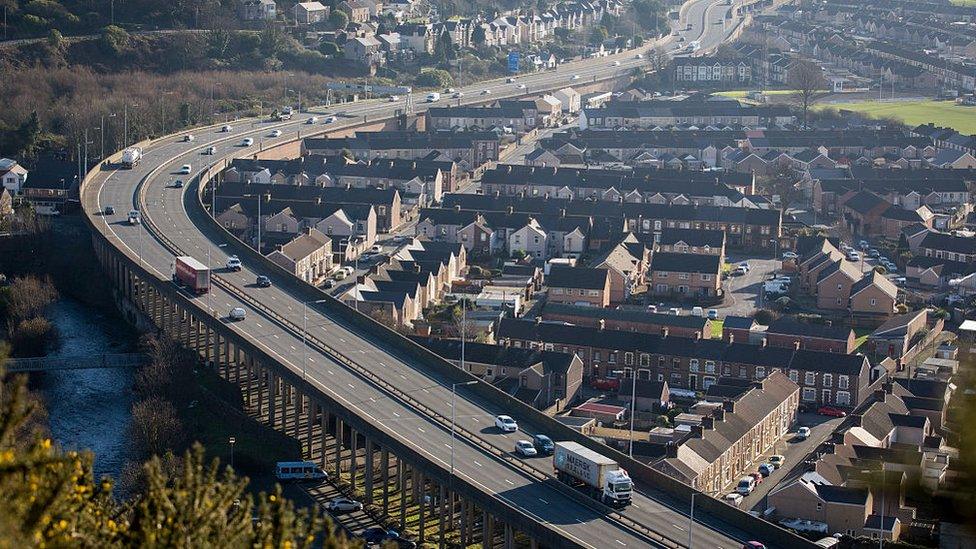
A 50mph zone is already in place on the M4 through Port Talbot
New 50mph zones could be introduced on two more sections of Welsh roads to tackle pollution.
The Welsh government wants to reduce nitrogen dioxide (NO2) concentration.
It is looking at the A470 between the Coryton and Nantgarw interchanges on the outskirts of Cardiff, and on the M4 between junction 43 Llandarcy and 44 Lon-las in the Neath-Swansea area.
It is reviewing "all practical options" and said it was too early to say if it would lead to more 50mph zones.
A full public consultation will be undertaken on shortlisted options.
Slower speeds have already been imposed in pollution hotspots around where drivers are used to doing 70mph.
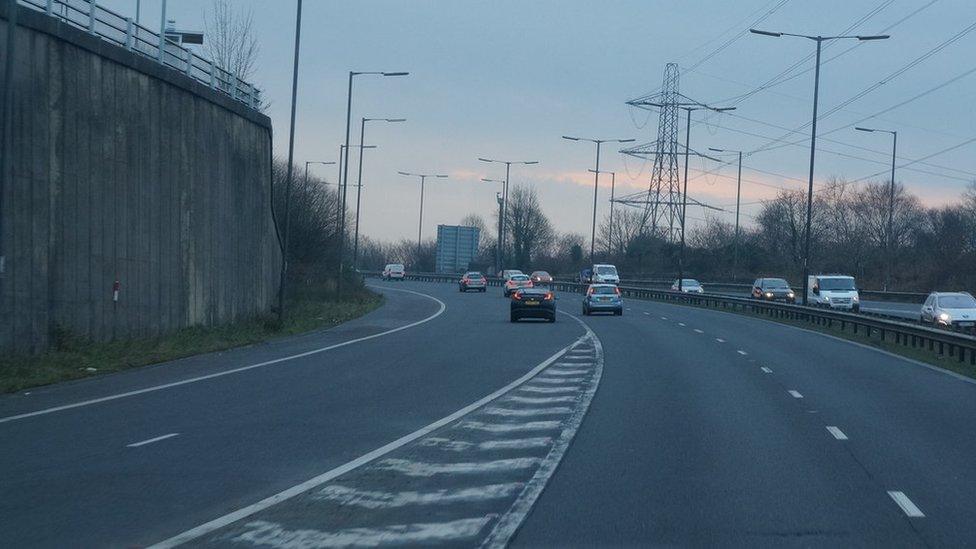
Nitrogen dioxide (NO2) concentration needs to be reduced on the M4 between junction 43 Llandarcy and 44 Lon-las
What's the problem with nitrogen dioxide?
"Speed limits for environmental purposes - we are at the beginning of that journey," according to one Welsh government official.
Targets have been set to reduce levels of nitrogen dioxide (NO2), a by-product of burning fuel.
It has been linked to all sorts of health issues, including lung problems in children and Alzheimer's in older adults.
What's the cost of 50mph zones?
Since 2018, the Welsh government has spent more than £5.6m creating five 50mph zones at sites found to have unsafe levels of NO2, an information request by BBC Wales has shown.
The money has paid for monitoring pollution, putting up signs and on speed cameras.
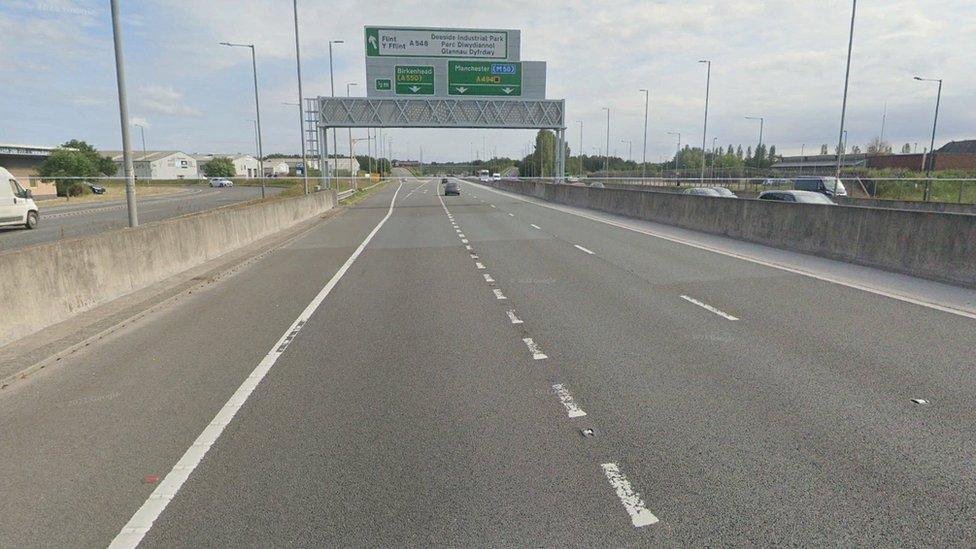
The A494 between Ewloe and the border with England is covered by the enforcement zone
Drivers caught breaking them get a letter explaining the dangers of NO2. Repeat offenders can expect to be fined.
Police only started enforcing the speed limits on the M4 and three A roads last year. They are:
The A494 between the Wales/England border and St David's Interchange at Ewloe in Flintshire
The A483 between junctions 5 and 6 at Wrexham
The A470 between Upper Boat and Pontypridd, Rhondda Cynon Taf
The M4 between junctions 41 and 42 at Port Talbot
The M4 between junctions 24 to 28 in Newport.
How many people have been fined?
The Welsh government said from the start of October until the end of January it had issued 40,013 advisory notices.
From the start of November until the end of January it issued 3,779 notices of intended prosecution.

The Welsh government is looking for solutions to air pollution on the A470 between Coryton and Nantgarw
Officials said the goal was to keep traffic flowing smoothly, avoiding big accelerations when drivers overtake or join fast-moving traffic at junctions.
National Highways, the body that runs England's motorways and A roads, has imposed 60mph limits in four places on the M6, M5, M602 and M1.
Its head of environment, Ivan Le Fevre, said: "Hard acceleration when people are putting their foot to the floor with the accelerator, that does make an engine really work very hard and produce lots more pollution than when they're running efficiently."
Mr Le Fevre said 60mph was "about the sweet spot" for keeping the air relatively clean without clogging the road.
Nick Molden, founder of vehicle testing and data specialists Emissions Analytics said diesel engines emitted more nitrous oxides (NOx), such as NO2.
Concern about diesel's impact has grown since the dieselgate scandal, when car makers were accused of covering up emissions.
"What should have been cleaning up the NOx from the engine before it was released to the environment, wasn't," Mr Molden said.
Highways England is not planning to lower more speed limits, but said it would keep its network under review.
Last September, about the time Welsh drivers were warned they could be fined for breaking 50mph limits, the World Health Organization slashed the level of NO2 pollution it said was acceptable by 75%.
The law requires NO2 be kept below 40 micrograms per cubic meter, a level based on the WHO's old target.

Frank Kelly said reaching targets would be difficult
Reaching the lower target of just 10 micrograms will be "really, really, difficult", said Prof Frank Kelly, an expert in environmental health at Imperial College London.
That was "simply because we have so many diesel vehicles in our fleet, not only in the UK but in Europe", he said.
Switching to electric vehicles would help, he said. But although their sales are booming, there are not enough of them to eliminate pollution hotspots.
"Certainly, while we have older vehicles and particularly old diesel vehicles on our networks, then we have to think about these sorts of measures," Mr Le Fevre said.
But even if dirty vehicles were driven off the road, exhausts are not the only source of pollution from cars because there is also concern about the potential harm to health from wear and tear on tyres.
Prof Kelly and others said more research was needed into the tiny particles of microplastics and chemicals that are released as tyres erode.
"I don't know if they're causing us any harm or not," he says.
"That work is just starting the toxicology bit of it."


- Published14 October 2021
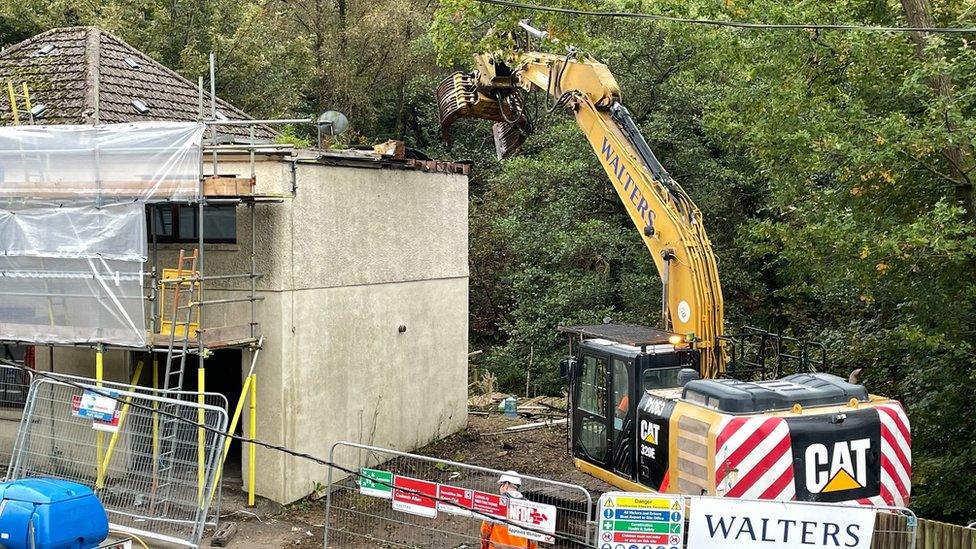
- Published27 September 2021

- Published21 June 2019
